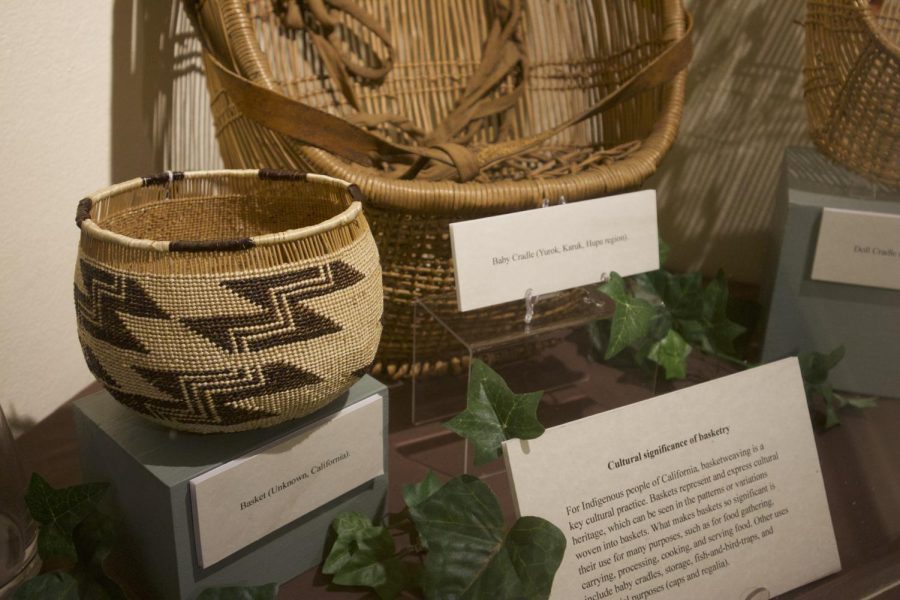A Microcosm of Native American History on Our Campus
November 9, 2022
Located in Meiklejohn Hall room 4047, the C.E. Smith Anthropology museum highlights the history of Native American contributions to the ecology and the culture of the Bay Area: from the influence of their agriculture to how adobe houses are made.
Founded as a teaching museum for the anthropology department in 1975, the student-curated museum has grown to encompass exhibits that showcase the vast diversity of the region as well as give students the opportunity to express themselves through participation. Students are given the artistic freedom to contribute and create the exhibitions at the museum, gaining experience in the field of archaeology, anthropology, as well as museum curation.
One of the current exhibitions at the museum is called “Fire without Fear: Restoring Indigenous Burning in California,” an exhibit by Tony Marks-Block, a California State University, East Bay professor of Anthropology. Professor Marks-Block demonstrates the recent toll wildfires have had on California and calls for the restoration of traditional Indigenous burning practices.
Controlled fire is a staple to Bay Area Native American culture, preventing large-scale, destructive fires by removing debris. The exhibit offers insight into the storied history, culture, and traditions of local Indigenous groups, demonstrating how these groups relied on the practice of prescribed burning to sustain their livelihood.
Marks-Block’s display challenges the viewer to “think of fire differently;” not as an agent of destruction nor as something to fear, “but to truly try to build different relationships with fire that aren’t so negative,” said Marks-Block.
Outside of the “Fire without Fear: Restoring Indegnous Burning in California” exhibit, the museum also offers a permanent exhibition on the creation of adobe houses called “The Museum of Mud” as well as an exhibition called “Archaeology Inc: The Business of Human History,” which discusses the for-profit aspect of modern archaeology, offering locally-found artifacts and materials from around the East Bay.
If students are interested in getting involved with the museum, there are a multitude of ways to do so. The most immersive and hands-on way to get involved is by taking the Museum Studies Anthropology course (ANTH 377), where students take on the role of being a curator, directly contributing to the findings of the museum. Students who take this course will gain experience in curation by collecting, repairing, and preserving anthropological materials that have the potential to be displayed in the museum. While speaking with the assistant director of the museum, Marjorie Rhodes-Ousley, she mentions plans of changing the exhibit after Fall 2023, when they are able to teach the course again.
Outside of the aforementioned course, students can get involved with the museum by doing work-study, and gaining experience and knowledge in working with museums if they are not anthropology majors.
If you are interested in knowing more about past exhibits, the information can be found here. The museum, located at Meiklejohn Hall 4047, is open Monday-Friday from 11 a.m. to 5 p.m. Any other additional information on the C.E. Smith Anthropology Museum can be found here.
















